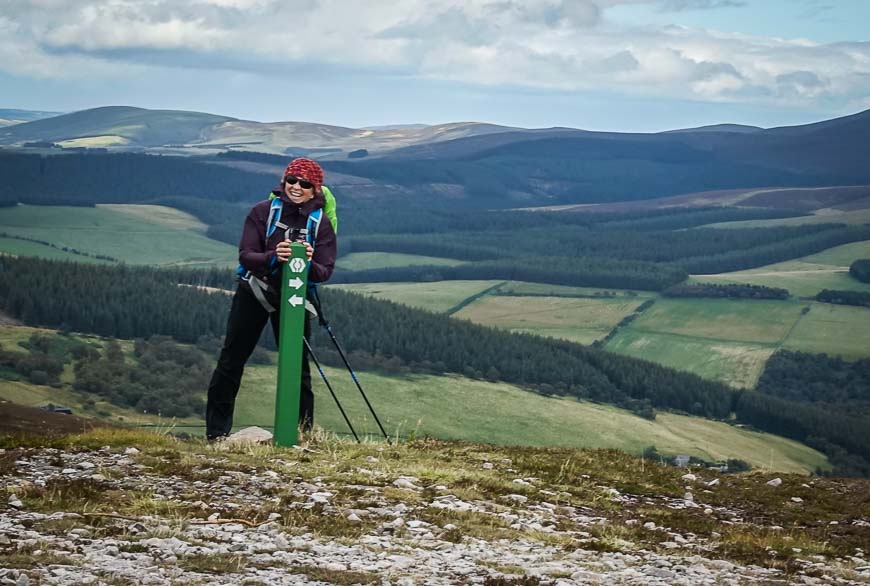“Let’s go on a hiking trip together sometime,” my friend Susan suggested. My response was immediate: “Where? When?” We decided on Scotland, a year hence. Meanwhile, I came across information about the Speyside Way Whiskey Tour, and since I didn’t care where in Scotland, and Susan is a single-malt-whiskey enthusiast, it was agreed. The only fly in the ointment was a hunk of titanium and a dozen metal staples
Surely six months would be sufficient time for Susan to recuperate from a hip replacement. Surely, the Speyside Way Whiskey Tour would be sufficient incentive for her to get better fast. Surely, it was.
We climbed aboard our flight to Edinburgh and a “short” 20 hours later we’d arrived in Buckie, a former fishing centre on the North Sea, between Inverness and Aberdeen.
In addition to the taxi to the airport and the plane, our journey involved a tram to Edinburgh’s rail station, a train to Aberdeen and a bus to Buckie, which became special when the bus driver changed his route so he could drop us off at the front door to our B&B. Scottish friendliness had begun!
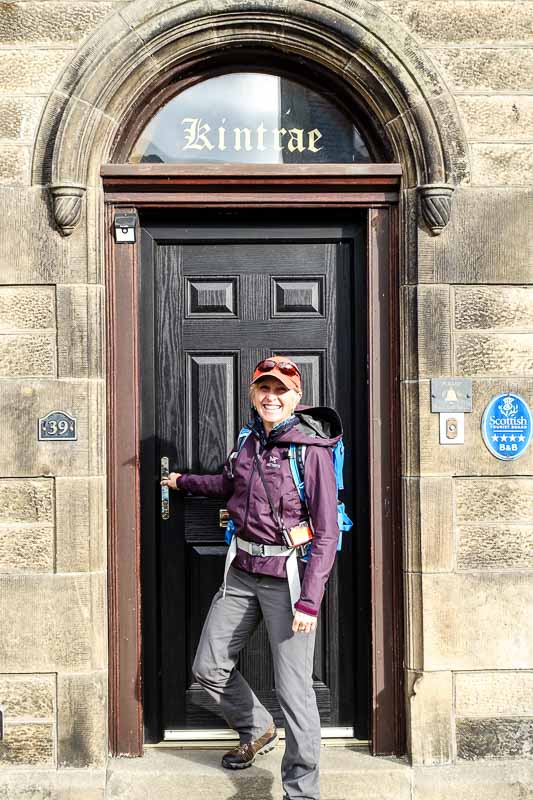
This post includes some affiliate links. If you make a qualifying purchase through one of these links, I will receive a small percentage of the sale at no extra cost to you. Thank you very much for your support.
Intro to the Speyside Way hike and whiskey tour
For seven days, we’d be following Scotland’s third-largest and fastest moving river the Spey. Famous for its trout and salmon fishing, we hoped we’d see an angler or two as, in addition to loving whiskey, Susan can execute a “double spey,” which happens to be a type of cast used for fly fishing.
We’d also be steeped in whiskey culture as we’d pass such iconic distilleries as Glenfiddich, Glenlivet and more.

We’d walk just over 150 km on the Speyside Way (an average of 22k/day) on the trail as long as the directions we’d been given were good and we didn’t get lost.
The terrain had rolling hills, with a couple of moderate climbs and lots of flat rail trails. We’d pass through towns and villages, ending up at a B&B with a hot shower and dinner each night, and a hearty breakfast each morning.
Our trip would be booked through an Irish company named Hillwalk Tours. For $1400 CDN each, they provided us with detailed notes on the route the Way travelled, booked our B&Bs, suggested places for dinner, distillery tours and other side trips, and, importantly, transported our luggage from one B&B to the next. I blamed Susan’s hip for our having to resort to this final luxury!
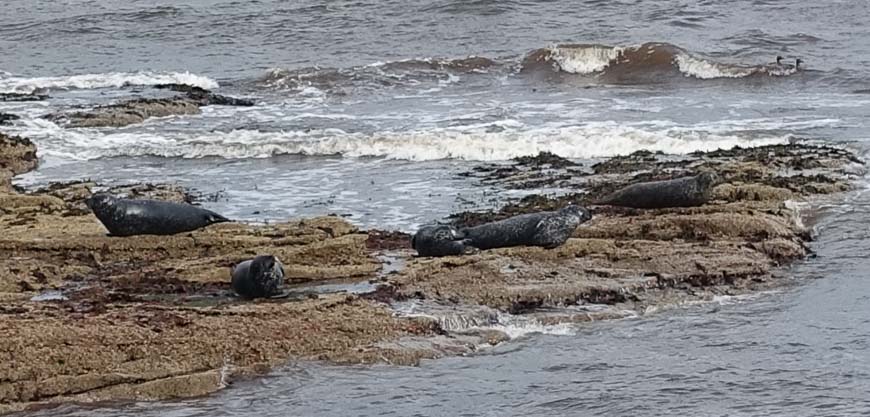
Day 1 on the Speyside Way
After Buckie-smoked haddock and scrambled eggs for breakfast, we were ready to hit the trail. We quickly left Buckie, heading west along the North Sea coast. Overcast skies and a salty ocean breeze made for great walking. Whitecaps broke on what looked like and indeed was an enormous and cold body of water.
Our Speyside Way notes from Hillwalk suggested we might see grey seals along this section of the trail and indeed we did. We also took their advice and stopped in at the Scottish Dolphin Centre. No dolphins appeared as we wandered along the stony beach, but the sun broke through the heavy clouds and with a final wave goodbye, we turned inland, leaving the North Sea behind.
It was here that we had our first sighting of the River Spey. From Loch Spey, it drops 300 m over 172 km until it drains into the North Sea at the exact spot where we stood. We’d roughly follow its course for our entire walk. The photo below was taken later in the afternoon, but gives you a sense of this magnificent river.
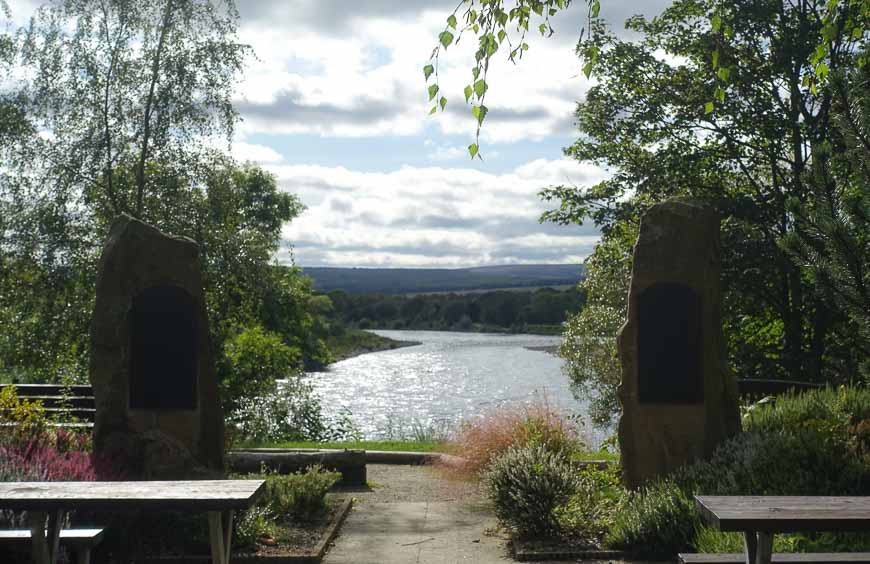
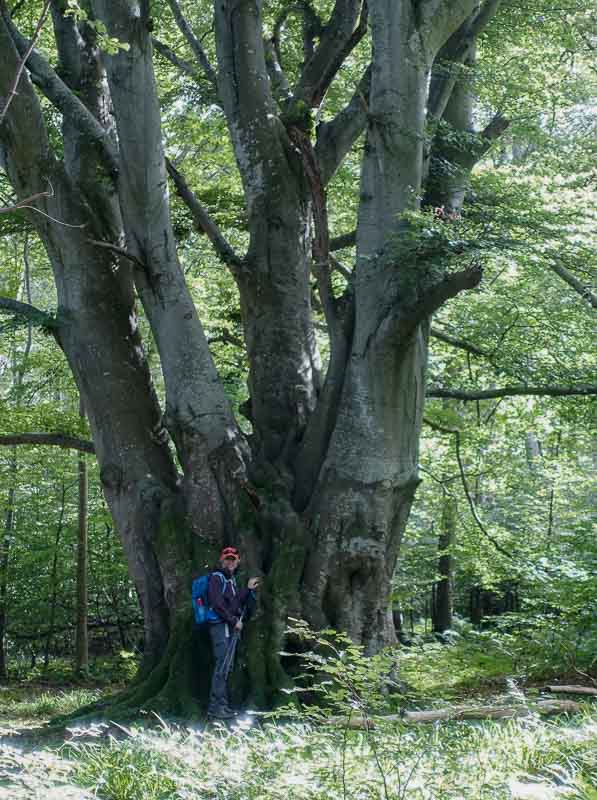
Hillwalk Tours took it easy on us the first day, as we only had to walk 18 km along flat terrain that took us up river. Along the way, we passed trees like the one above, and fulfilled one of our goals: As we stopped on the riverbank to watch a fly fisherman in action, a gorgeous salmon sprang into the air, its arched back catching the sunshine.
It was if the Scottish Tourist Board was intent on impressing me and tempting Susan.
At about 4:30 PM, we arrived in delightful Fochabers, the first of a number of towns with unpronounceable names. After checking into theGordon Arms Hotelwe headed out to the Grant Arms Hotel for a wee dram, as we eased into the trail.
We followed up our whiskey with a delightful meal in the Gordon Arms Hotel. The exercise, food, fresh air and, I suppose, the whiskey caused our eyelids to begin drooping early. Soon, we were tucked between crisp white sheets with a Scottish breeze helping us sleep.
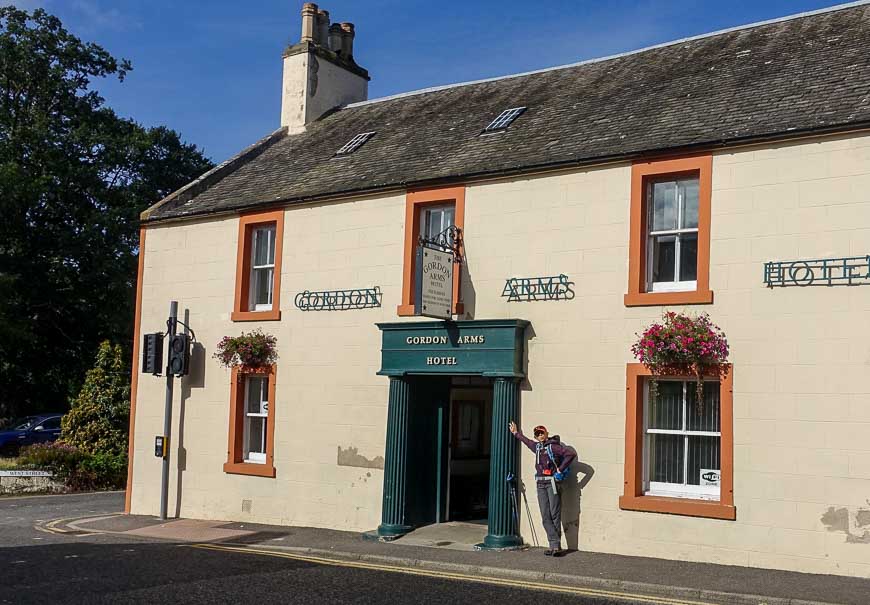
Day 2 on the Speyside Way whiskey tour
Heavy dew had settled on the grass as we exited Focabers under clear-blue skies. We had 21 km to walk, but almost wished it was longer since the morning sunshine felt so good on our backs.
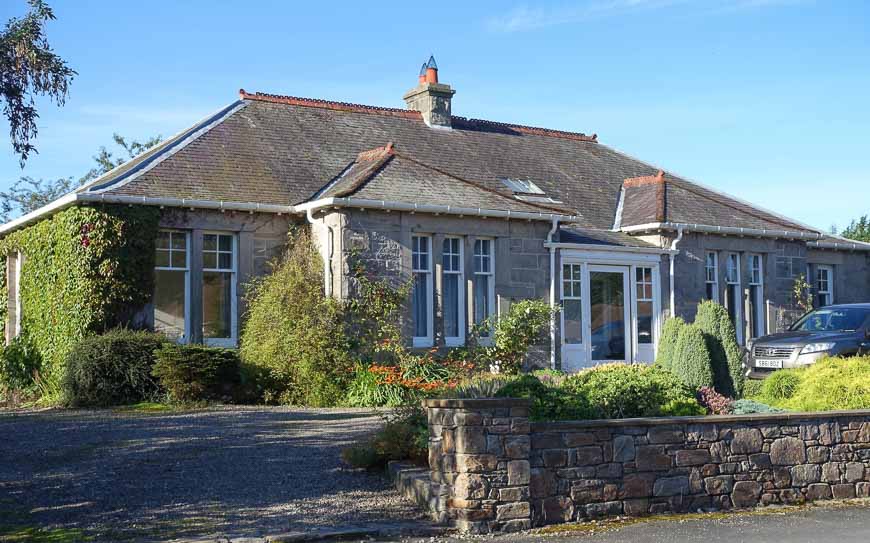
I knew there was a lot of stone in Scotland, but wasn’t prepared for the beautiful stone cottages that lined the streets in Fochabers. I would have been happy living in any one of them. But urban streets quickly gave way to country lanes overlooking Scotland’s rolling landscape.
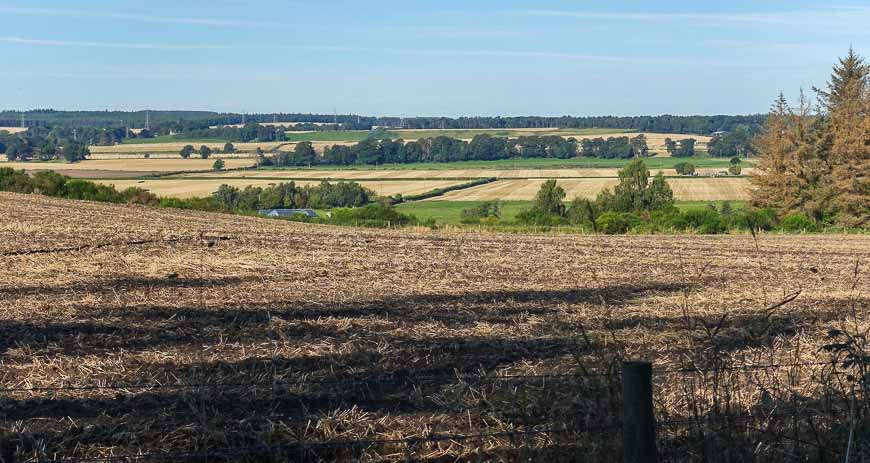
Unlike the northwest coast of Scotland, the Spey valley has a lot of picturesque agricultural fields and pasture where we were pleased to see Highland cattle and lots of sheep.
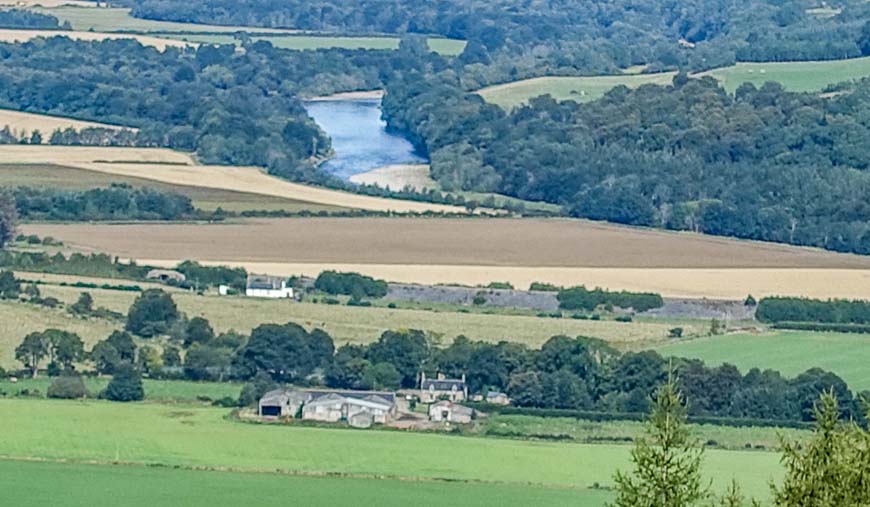
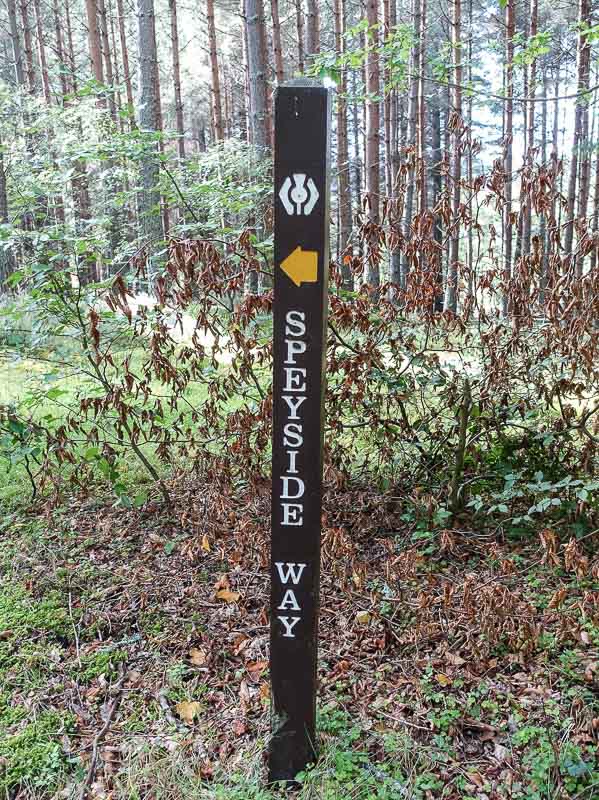
Hillwalk provided us with detailed notes on the route, but between the signage and a good map, we seldom needed to refer to the written instructions.
We zigzagged our way cross country, occasionally catching sight of the River Spey. As we would not pass a town this day, we’d packed a light lunch and stopped at midday to rest and have a snack. Earlier, I’d plucked a ripe plum from a tree. It was juicy and sweet.
After a leisurely walk, we arrived in Craigellachie, a name we thought we could pronounce given we have our own Craigellachie in British Columbia, which is famous since it’s the sight of the “last spike,” where the Trans-Canada Railway met in 1885.
But our attempts at saying Craigellachie were met with blank stares. People had no idea what we were talking about. It took us some time to put the emphasis on the second syllable rather than the first.
There was no last spike in Scotland’s Craigellachie, but it did haveThe Highlander Inn– which is where we headed – well Susan charged, not long after we climbed the 99 stairs up to the Bridge View B&B.
The bar in the Highlander Inn has one of Scotland’s “finest whisky selections,” according to our notes. Minutes after our arrival in the cozy bar, Susan had made friends with Billy the bartender and was seeking his advice on what to try from his amazing collection of whiskey. She selected a Lagavulin she’d never had before and was immediately in heaven. So celestial was the experience that she hardly noticed having to climb those 99 stairs for a second time.
Despite its lofty situation, the Bridge View B&B, like all of the accommodations that had been booked for us, were delightful. This one had been recently renovated. It was bright and sparkling clean, and Debbie, who had recently taken it over from her parents, was delightful. We were amazed at how friendly and helpful all of our hosts were.
It was back down those blasted stairs to the Highlander for dinner, where we met a couple from Yorkshire who regularly visit Scotland. When they learned I’d never tried haggis, they made it their mission to have me try some of theirs.
Tentatively, I tasted this Scottish “delicacy,” and was surprised that I liked it. I’m not sure I’d want it for my entire dinner, but it was light and tasty. The Encyclopedia Britannica describes Scotland’s national dish as, “a type of pudding composed of the liver, heart, and lungs of a sheep (or other animal), minced and mixed with beef or mutton suet and oatmeal and seasoned with onion, cayenne pepper, and other spices. The mixture is packed into a sheep’s stomach and boiled.” I was pleased that I read this description after sampling it.
Speyside Whiskey Tour Hike – Day 3
Day 3 was my favourite among many great days on the Speyside Way trail. We woke to light rain and after yet another hearty breakfast, we hit the trail. This time we were clad in our rain gear – the only time we used it.
Rather than walk to the next town along the Speyside Way, we were walking the 20 km Dufftown Loop. It was a beautiful route and one that had we not booked with Hillwalk, we may have missed. That’s the benefit of hiring experts.
It was also nice to be staying for two nights in the same B&B. As a result, we didn’t need to pack up in the morning and we’d had time to make a reservation at the Copper Dog Pub for dinner our second night. It was to be our finest meal of the entire trip.

Glenfiddich Distillery
After following a picturesque rail trail in misty rain for a couple of hours, we arrived at the Glenfiddich distillery. Opened in 1887, it produces the world’s best-selling single-malt whiskey. We stopped in hopeful of taking a tour, but we’d just missed one and the next one was hours away.
To be honest, we were a bit relieved that we couldn’t take the tour as it was 1.5 hours long which would have meant we wouldn’t have made it back to Craigellachie until after 6 PM. In the end, we never did take a distillery tour and other hikers we spoke to didn’t either. In hindsight, it would have been a good idea to add an extra, non-hiking day, to the tour so that we could do a bit more sightseeing – or drinking of single malts!
The Glenfiddich distillery is in Dufftown. Our directions told us that we’d detect the “sweet and malty smell” of the distillery before we saw it. This was true. Distilleries smell great. It’s all that warm sweet grain. Dufftown also has an old railway station since there is a tourist train that will take you to Keith, which is some 18 kilometres away and home to the Stathisla distillery.
We had a hot coffee in the Glenfiddich café and moved on, walking into the town. This loop was the only time the directions we’d been given didn’t seem to line up with what was on the ground. While we did find our way, it meant we missed visiting Balvenie Castle. But we did stop into a shop that sold fiddles, kilts and other associated items.

We resisted buying kilts and walked on. The rain had let up and it was a cloudy, but soft humid day, perfect for walking. Once again, the directions we’d been given were suspect, leaving us guessing, or taking the word of a security guard from Glasgow. We should have known better!
After passing through a field of very wet barley, and just about starting a stampede of curious cows, we managed to get back on track. It took us up high over the Knock of Gownie through thick woods and then down into Aberlour, home of the Aberlour distillery.
The walk over the knock was our first real adventure into gorse and heather. While it would be great to have some heather in Canada, I’d leave the thorny gorse in Scotland.
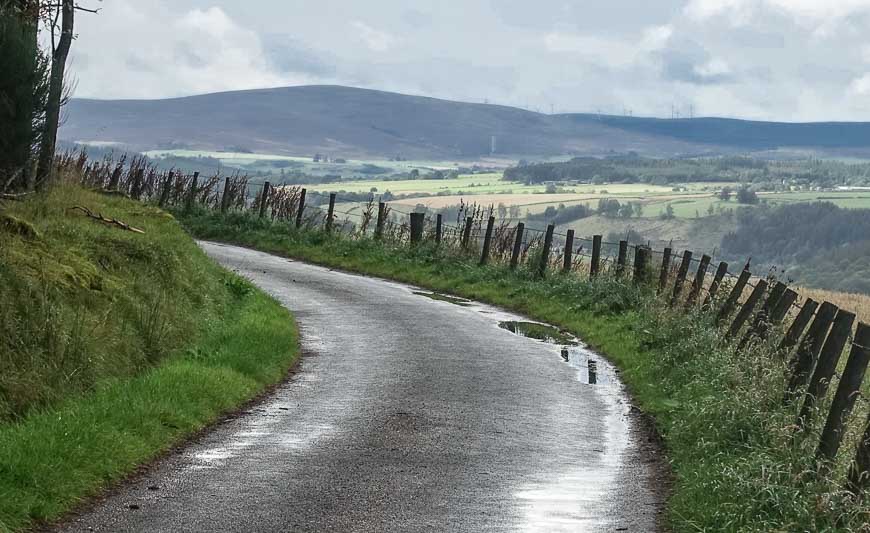
Too soon, the village of Aberlour was at our feet. We stopped in at the Speyside Visitors Centre in the old train station, where we met Jack who related a few stories before directing us to the rail trail that would take us back to Craigellachie.
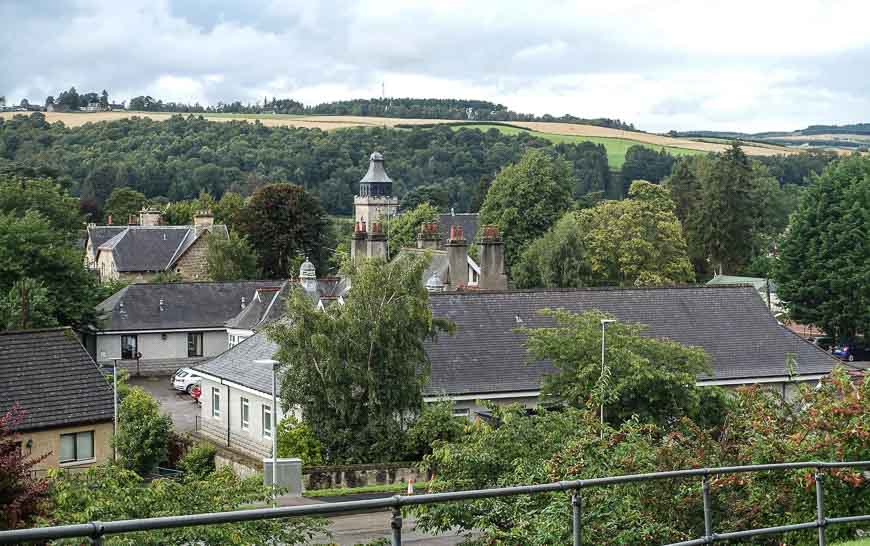
We arrived “home” just in time to reward ourselves at The Highlander.
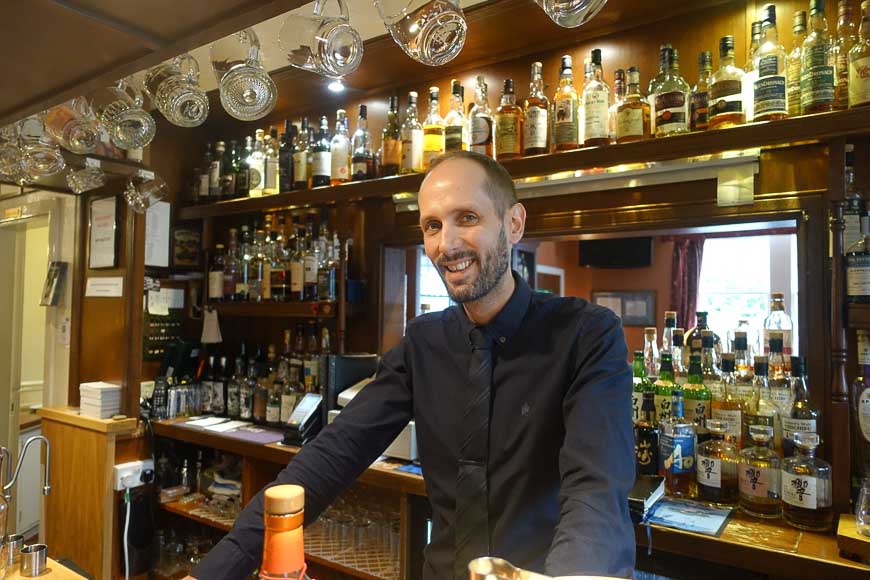
That night we ate at the Copper Dog Pub, which wasn’t really a pub. But it was a lovely restaurant and we both gobbled up our smoked haddock risotto.
Whiskey Tour – Day 4
The next day, we said goodbye to Craigellachie and returned to Aberlour where we enjoyed a coffee and visited the Aberlour distillery. We also stopped in at the Walker’s Shortbread Factory shop. Christmas wouldn’t be the same without Walker’s shortbread in its red tartan packaging.
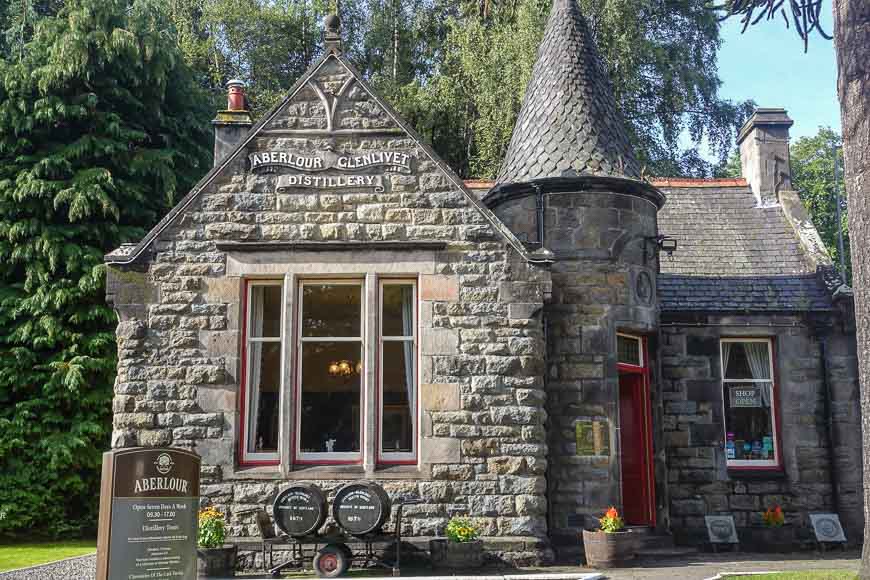
Under a sunny sky, we followed a rail trail for 20 km. It was easy walking, but I find 20 km on a rail trail a bit tedious. Nonetheless, it was a pretty route, which followed the River Spey for much of the way. We ventured down to the river bank and enjoyed what is a very fast-moving and picturesque river. We could imagine travelling it by canoe or kayak, and indeed, there are such trips.
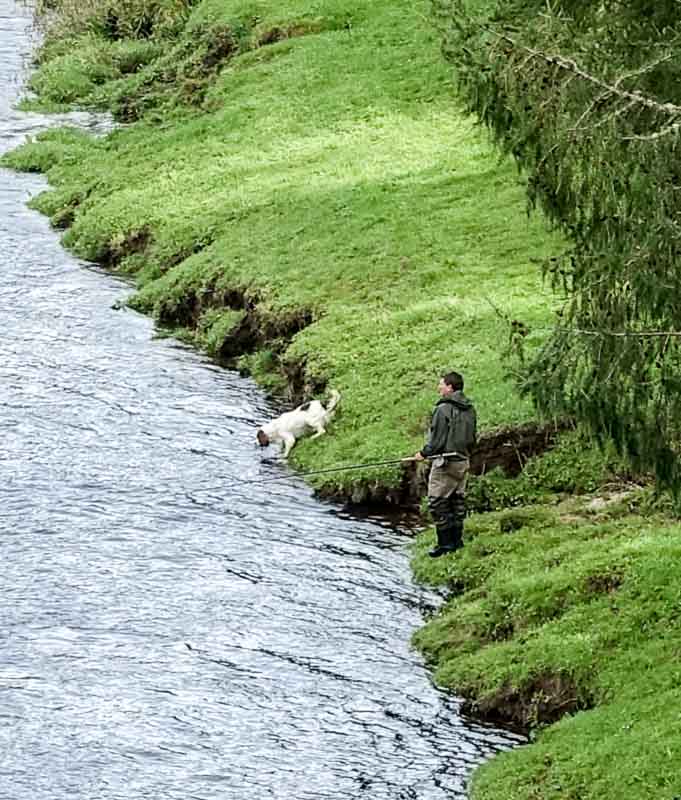
Fly-fishing on the Spey
We learned that fishing on the Spey is unlike anything we have in Ontario. The river is basically privately owned by various landowners. Its banks are manicured and there are regularly spaced small cottages that house anglers who hire guides, known as gillies. A stretch of river bank with a cottage is known as a “beat.” While prices vary, it often costs 1000 pounds for a day’s fishing!
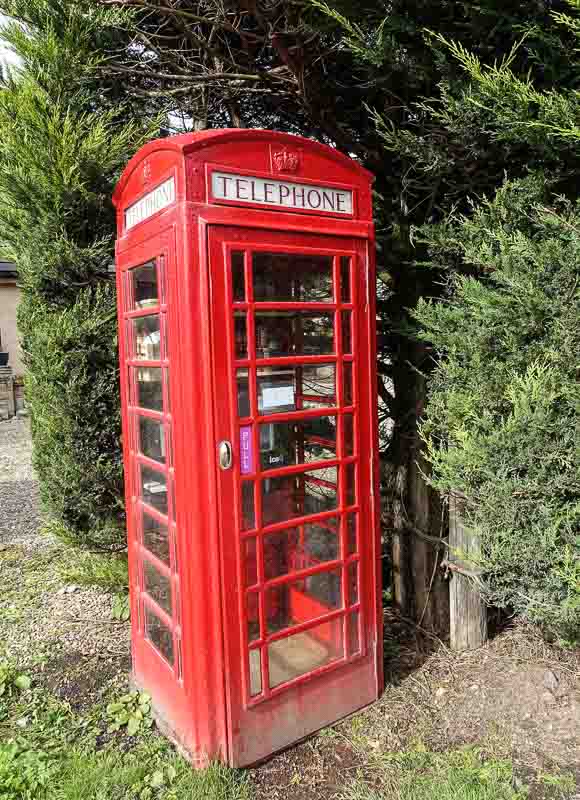
We came across this phone kiosk in Carron, a village without any services. This old phone “box” has been “adopted” by the village. Rather than having a phone inside, it’s filled with snacks and cold drinks that can be purchased by hikers such as ourselves.
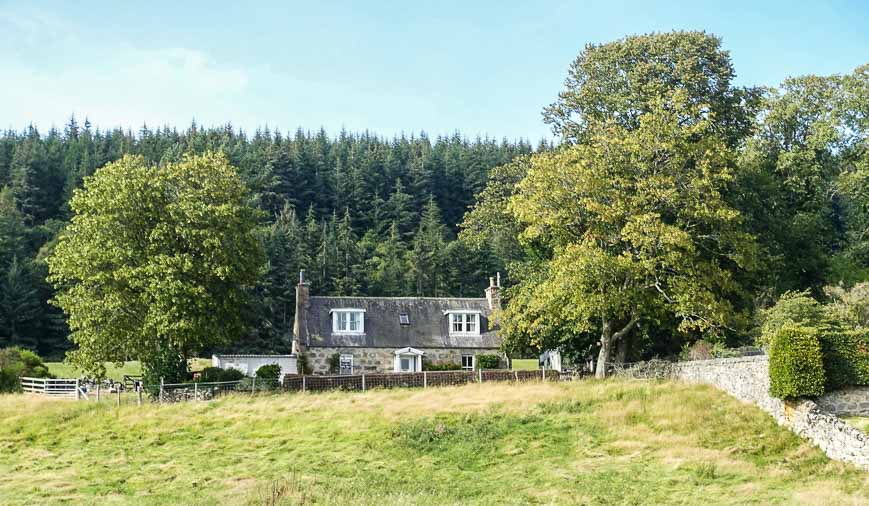
We mostly walked through forest interspersed by small farms. Had the cottage in the photo above been for sale, I’d have been tempted to purchase it.
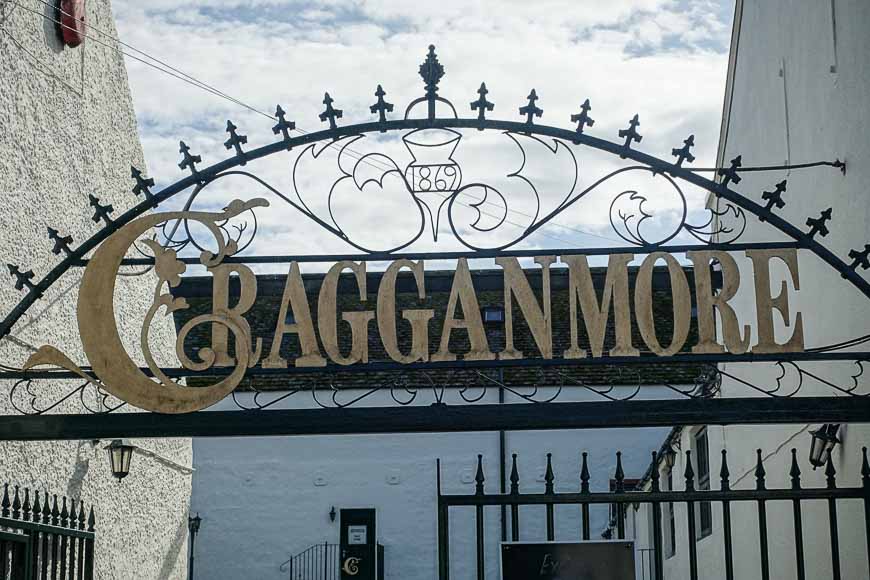
We arrived in Ballindaloch at 3 PM, so took the opportunity to make our way to the small Cragganmore distillery before checking in to our hotel. Once again, our timing didn’t line up with a tour, but we did taste a dram or two before heading to our nearby hotel.
Susan’s favourite, Dailuiane, was a smoky brew created by a Canadian woman who works for the distillery. While there, I learned a lot about scotch, despite not going on a tour. Those who know scotch will know these things, but it was news to me. The distinctive flavours of different scotches come from:
- What the cask was used for previously. Whether the cask once contained sherry or bourbon or madeira, for instance, has an impact on the sweetness of the scotch.
- The size of the cask also affects the flavour.
- The type of wood used to make the cask also changes how the scotch tastes. Casks are made from oak, but European oak adds a bitter element, while American oak imparts a sweetness.
- Whether the cask is “toasted” or “charred” also creates a unique flavour.
The scotch produced in Speyside tends to be light and sweet, while those produced in the famous island of Islay (particularly those on the west coast) have a peaty flavour some describe as smoky. Whiskies from Islay remind me of the pipe tobacco my dad used and while that might sound distasteful, it’s not. I love these peaty scotches such as Lagavulin and Laphroaig.
I learned, however, that I prefer the smoother single-malt Speyside whiskies, especially those that are a bit sweet. I came home with a bottle from the Aberlour distillery. Called Casg Annamh, which means “rare cask” in Gaelic, it was stored in a sherry cask. As for vineyards, distilleries have great descriptions. My Casg Annamh is, “A rich and intense whiskey. The fruity flavours are balanced with spicy notes of liquorice, ginger and cinnamon.” A litre bottle cost a frightening $90.
Speyside Whiskey Tour – Day 5
We were once again treated to two nights in the same hotel. This time it was the unpronounceable Delnashaugh Hotel. We not only had a basic, but large room, but were treated to two dinners in the hotel’s dining room. It was the only option for hikers like ourselves as Ballindaloch has no other services. The food was great and we couldn’t resist the lamb shanks on the second night. They were delicious especially after our long hike on Day 5.
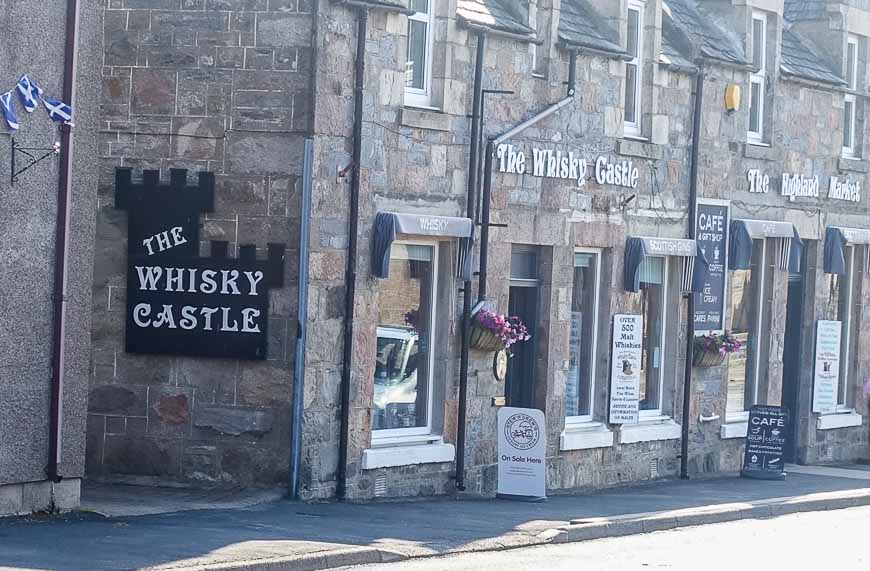
Tomintoul Spur
Today we had another side hike called the Tomintoul Spur, which we’d have been unlikely to have done had it not been for Hillwalk Tours. A taxi picked us up in the morning and delivered us to Tomintoul, the highest village in the Highlands.
Our first stop was The Whisky Castle where Susan was like a kid in a candy shop. She drooled over what was available and had it not been 9:30 AM would likely have tried a dram or two. As it was, she only drooled before we began the 23 km walk back to Ballindaloch along what would be our hilliest day of the tour.
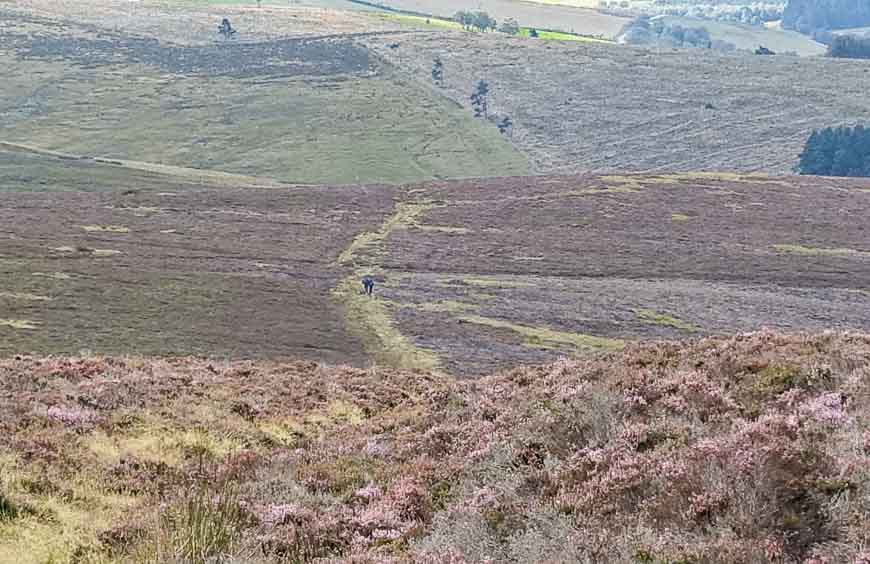
Despite Tomintoul’s billing as the highest village in the Highlands, we climbed steadily as we left The Whisky Castle. Passing sheep, we left the trees behind and heather took over. It was not yet in full bloom, but was still beautiful as the photo above tries to impart.
It was a windy day, and the higher we climbed, the stronger the wind became. Our route took us up and over Carn Daimh where the wind howled. It wasn’t strong enough to knock us off our feet, but it was close. I took the photo below. It’s fuzzy because the wind was so strong I couldn’t hold the camera steady!
Descending the other side, we crossed the Blairfindy Moor where heather once again dominated. Much of the route we followed was on land owned by Glenlivet and just as we were beginning to feel our sore feet and complaining knee, what appeared but first Glenlivet House and then the white chimney of the Glenlivet distillery. Were we ready for a break!

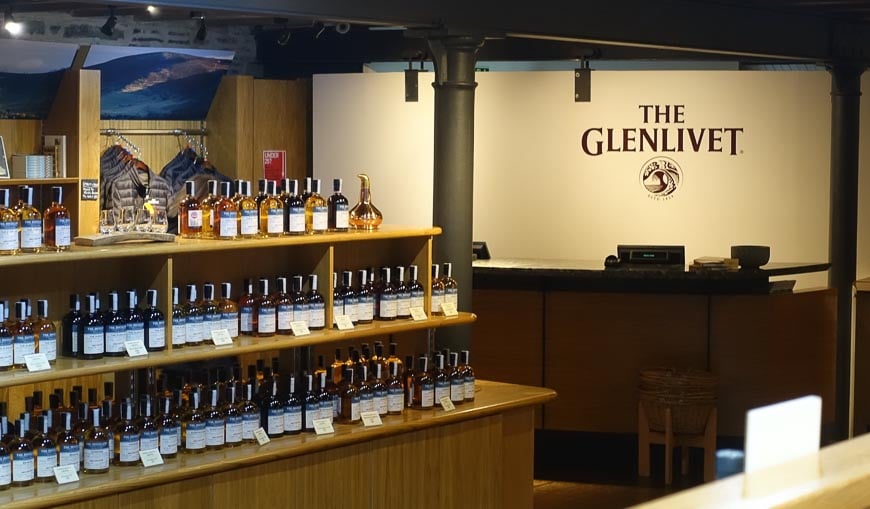
We toured the small store and then Susan had tea while I boosted my energy with a very strong espresso in the Glenlivet café. Somehow we resisted the whiskey. What were we thinking?
Afterwards, it was down to the River Livet and then up, up, up to the Hill of Deskie and over Cairnacay. High on this moor, we could see almost forever as we walked through the wet peaty landscape trying our best to keep our feet dry. It was strange to experience such a wet landscape at such a high height. But such is Scotland.

It was our toughest day yet and we arrived back at our hotel ready for a small dram before showering and heading to the dining room for our lamb shanks.
Speyside Whiskey Tour – Day 6
We left the old railway station in Ballindaloch following a rail trail. The flat terrain was a nice change from the climbs along the Tomintoul Spur.
But after following alongside the Spey for awhile, we headed up out of the valley and into what they call “Areas of Forestry,” which make up a surprisingly high percentage of the forest in Scotland. Largely single species of spruce and pine trees are jammed together making these woods dark dank places with little or no undergrowth.
We climbed up and then followed a rough path that passed through farmland. Here we noted they used a type of stile I’d not seen before. See below for a demonstration of how they work. At first, we were delighted with these nifty structures.
After the tenth one, however, we were becoming less enamoured. After 20, they were a pain and we were feeling sorry for ourselves until we met a cyclist. He commented on how difficult it was to negotiate the stiles with a bicycle. And indeed, it would be.

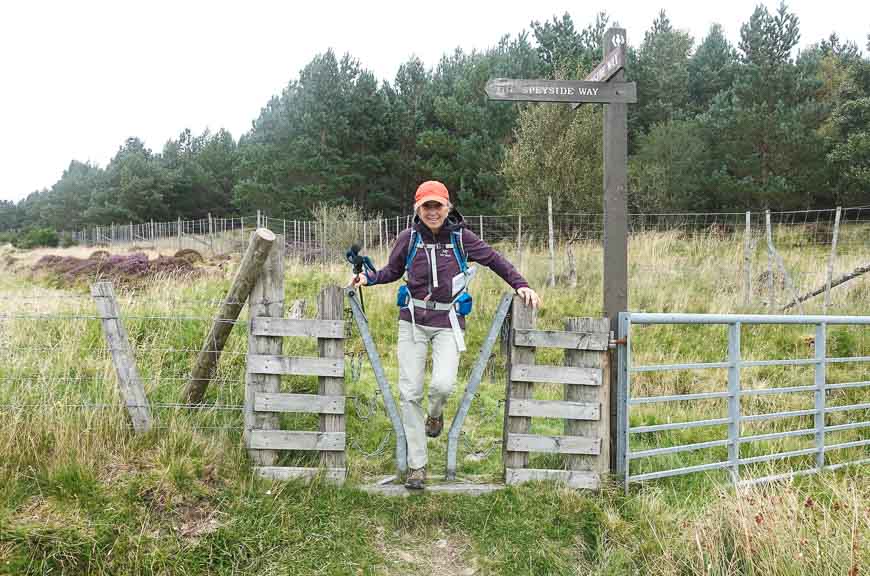
Over about five km, we counted more than 50 of these stiles!
We stopped for lunch on the side of the trail overlooking the river as the clouds began breaking up. For the afternoon, we had a clear blue sky with shafts of sunlight penetrating a deep-dark woods. It was spectacular.
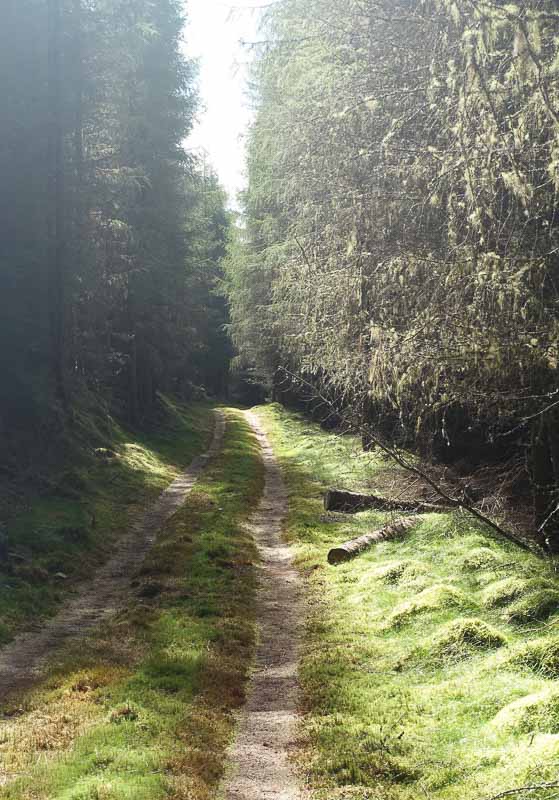
After stopping to chat with a fellow walker who was out with his three wire-haired dachshunds, we left the forest and passed by the village of Cromdale, where we admired its old, but beautifully restored railway station.
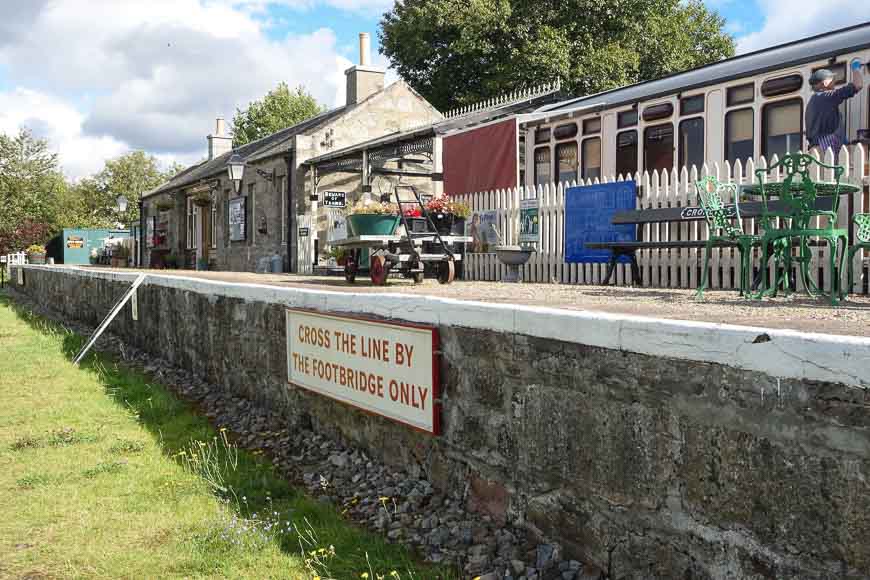
We entered a community forest crisscrossed by well-used trails before finally arriving in Grantown on Spey and our stop for the night atDunallen Guest House.
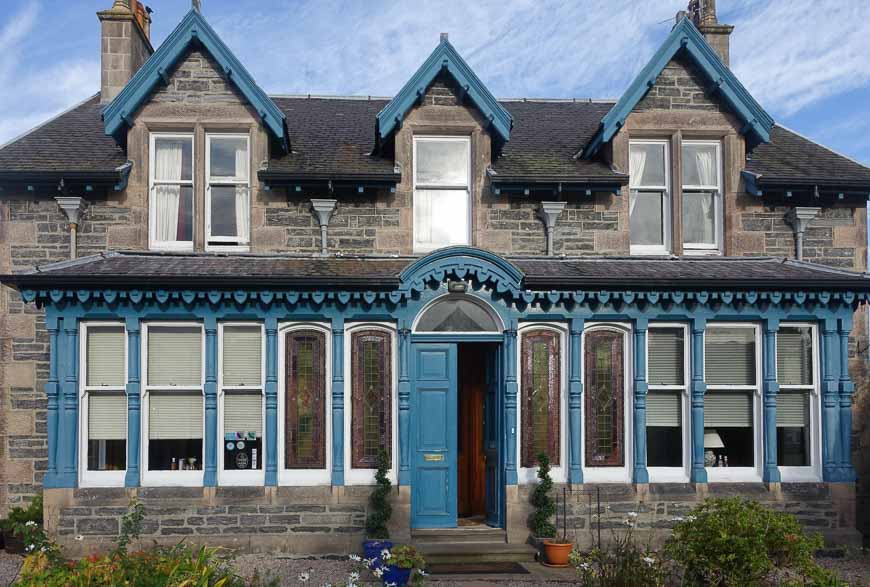
The Dunallen B&B
Grantown on Spey was the largest town we stayed in and the Dunallen B&B was the friendliest lodging, though all the B&Bs we stayed in were wonderful. Our hosts Ginny and, especially, Stephen, made a point of introducing everyone to everyone at breakfast.
That meant we met folks, some of them fellow hikers, from South Africa, Tasmania, Germany, the US and England. And while I’m on the topic of breakfast… If you have a good appetite and have never had a “full Scottish breakfast,” then you have to experience one. Susan and I wisely resisted as we couldn’t have eaten half of what comprises this hearty meal. Here’s what you receive:
- Eggs and back bacon
- Link sausage and baked beans
- Grilled tomatoes and mushrooms
- Black pudding (don’t ask!)
- Tattie scones (potato) and toast
- Juice, tea or coffee
We also had a hearty dinner at the Wee Puffin. We decided to eat there based on the recommendation from a fellow hiker we’d met on route and because I couldn’t resist the name.
Day 7 on the Whiskey Tour hike
We reluctantly left the DunAllen B&B for the 27 km hike to Aviemore. It would be our longest yet, but without much climbing. Our reward was that at the end of it all, we’d be in Aviemore, the centre of all outdoor pursuits in Cairngorm National Park, where you can ski in winter.
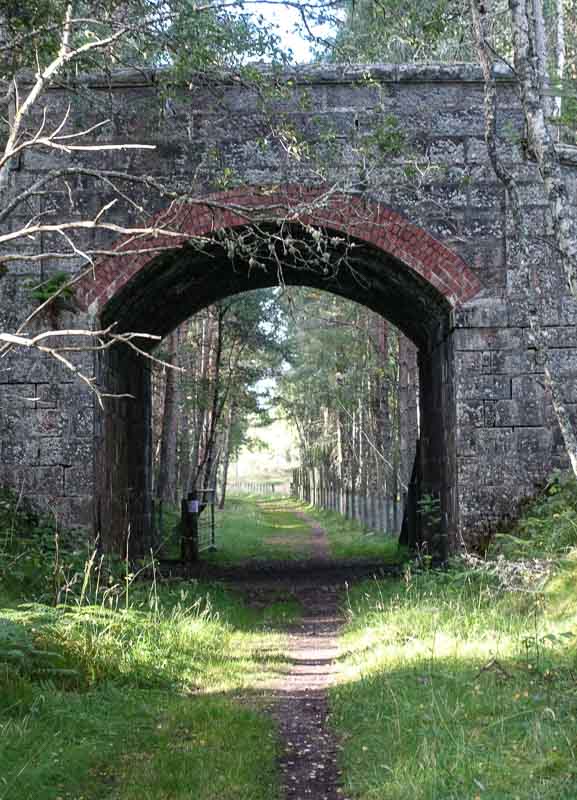
Not far outside town, we picked up a lovely rail trail and began making our way toward a town with an intriguing name: Nethy Bridge. Once again, we had clear blue skies, which was great as this was our last and longest day on the tour.
While we’d been a bit concerned about the 27 km we’d have to walk, it turned out to be one of our easier days. In part, it was because after a week of walking we were well into our stride, but it was also because the route has two perfectly located stops.
The first is Nethy Bridge as mentioned above; the second is the curiously named Boat of Garten. Oh, and I can’t forget to mention the heather. Fields and fields of purple heather stretching forever. But that would be later in the day.

The joy of a long distance hike
By now, we’d pretty much forgotten we had lives beyond the Speyside Way. Gone were our worries about deadlines and projects and events and ailing friends and bills and relationships and, well, about anything other than the occasional sore foot or twinging knee or if we’d get a decent cup of coffee. Our days consisted mostly of putting one foot in front of the other.
Hillwalk Tours had booked our accommodation and given us suggestions on where to eat and, of course, they had our luggage transported. So our daily concerns were all taken care of. It had taken the better part of the week to get to this wonderful carefree state. It seemed a shame that it was our last day on the trail. I wished I could just keep walking. Walking away from the world of climate change and politics and having to make a living.
As it was, we ambled along chatting and sharing stories and looking at the landscape and admiring the rooks that glided effortlessly overhead. The kilometres slipped by and sooner than we expected, we’d arrived in precious Nethy Bridge. We spied the lovely Nethy House where we shed our day packs and were enveloped by soft comfy chairs.
Our frothy lattes arrived and we sat with the sun shining in through the large windows and admired the art on the walls and listened in on our neighbours’ discussions. We were warm and happy and content in a way that only comes after being active in the outdoors.
We had a slight burn on our cheeks from being outside in the wind. There wasn’t much need to keep our own conversation going. We were content to be quiet and let the world go on about us. We had our task for the day. We had to get to Aviemore and that was about it.
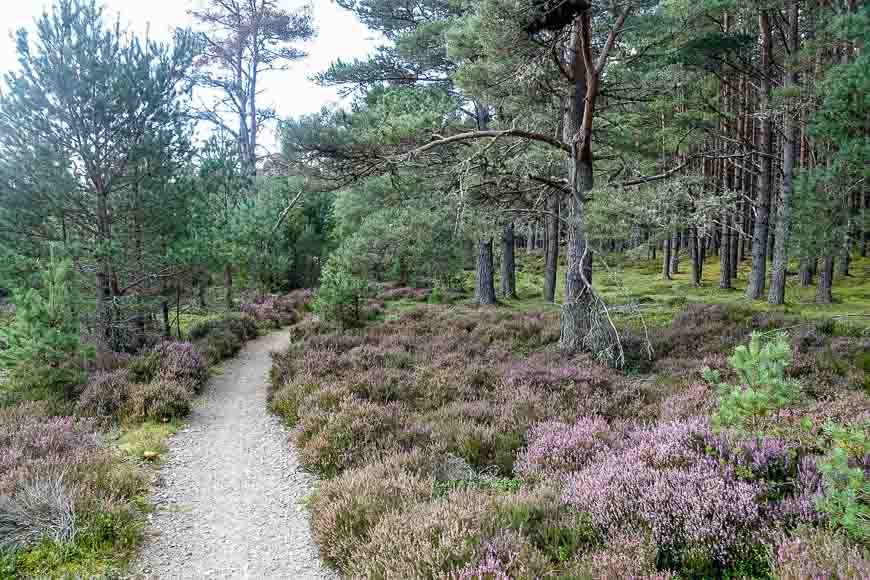
Continuing on, we walked through what we thought was the most beautiful heather we’d ever seen. The trail had broadened to a cinder track and we could walk side-by-side, which made it easy when we wanted to chat.
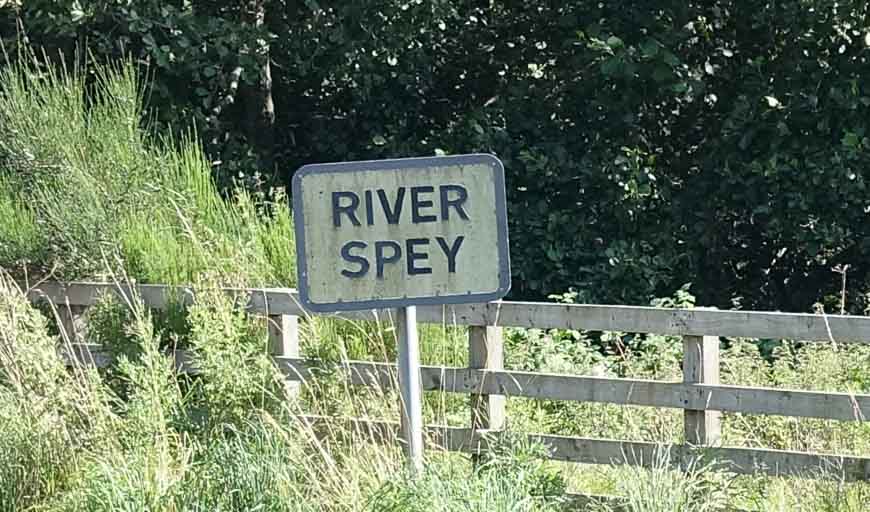
We crossed the River Spey for the last time as we arrived in Boat of Garten – a collection of houses, an inn, a bike shop, an art gallery and a small shed that sold cold drinks and coffee alongside the railway station for the Strathspey Stream Train. The village, which isn’t too far from Loch Garten, derives its name from the fact that until a bridge was built in 1898, a ferry was the only way to cross the River Spey.
We had cold drinks and sat outside in the sunshine savouring the last leg in our 150 km journey that began in a fishing village on the North Sea, crossed over highlands dotted with the most famous distilleries in the world, all while following the beautiful salmon- and trout-rich River Spey. Now we were deep into Cairngorm National Park, created as recently as 2003 by the Scottish Parliament.
Coming from Canada where Banff National Park, our first and world’s third national park, was created in 1887, the Cairngorm’s youth surprised me.
Leaving Boat on Garten, we spied our first “wildlife” other than birds since we’d watched grey seals in the North Sea at the start of the Speyside Way. We came across a slightly odd small brown and black “snake.”
There was something about its head that wasn’t snake-like, however. When we looked it up later, we discovered we’d hadn’t seen a snake at all. Instead, it was a slow worm. In comparison to our earth worms, it was a pretty amazing critter. It was a foot long and had snake-like markings. A doozy of a worm or so it seemed.
Then we learned that despite its name, it wasn’t actually a worm either. Instead it was a lizard or, more accurately, a legless lizard. I know there’s more to it than this but wouldn’t you think a legless lizard is, well, a snake? Slow worms are not uncommon in Scotland, but it was unique for us.
Between Boat on Garten and Aviemore, we travelled through alternating forest and heather. Fields, acres, kilometres and miles of heather.
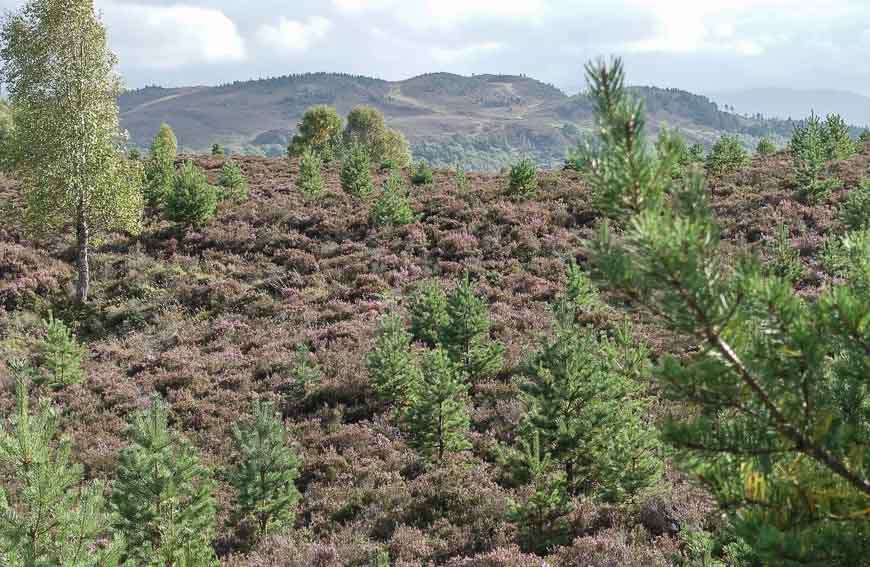
The trail was lined with heather in a manner that no gardener could match.
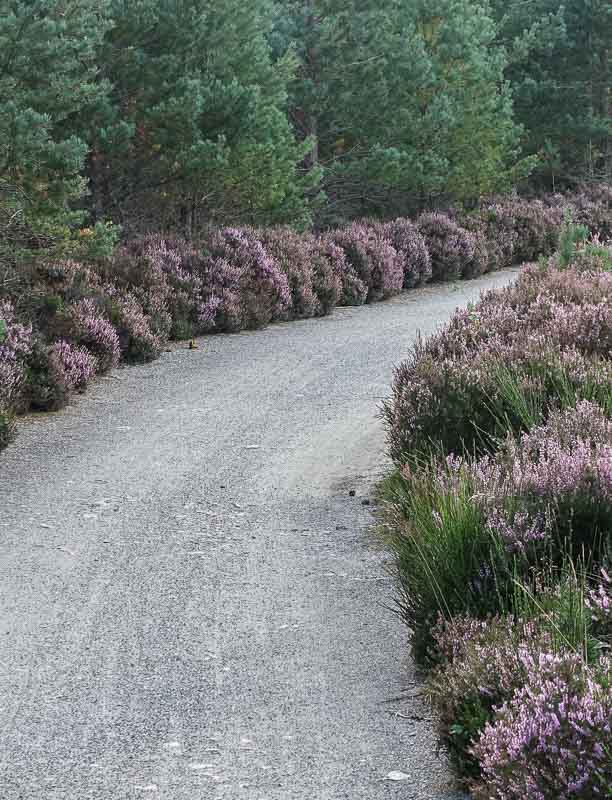
And so it was that we arrived in Aviemore and checked intoThe Park Guesthouse. As is often the case at the end of a journey, we were pleased we’d succeeded in reaching our goal, but sad that we wouldn’t be back on the Speyside Way tomorrow.
We had also completed our day’s 27 km in remarkedly fast time for us. We savoured our accomplishment with the last two drams from the bottle of single-malt we’d been carrying in our luggage, then we showered and put on our best dudes. Walking out in the crisp evening air, we made our way to the highly recommended Old Bridge Inn for dinner.
Our notes had advised us to make a dinner reservation at the Old Bridge Inn at least two days in advance, and it was a good thing we had – thank you Hillwalk.
When we arrived the pub was hopping, alive with energy and good spirits. We were ushered to our table in the pub and we let all that good will envelop us as Susan sipped yet another single malt and I imbibed in a local brew. We reminisced about our journey, recounting the places we’d stayed, our favourite parts of the hike, the best meals and worst coffees.
I chided Susan about her nightly purring and she came back with an imitation of my “purring.” Dinner, when it arrived along with a good bottle of Malbec, would have tasted great even if it was shoe-leather liver. We were in that kind of euphoria. We shared dessert – well Susan had a bite and I slurped every ounce of Scotland’s famous sticky toffee pudding.
We awoke the next day to heavy rain and gusty winds. We couldn’t believe our luck. Over the seven days we’d walked – remember, this is Scotland – we’d only had to wear our rain gear for half a day.
We’d had several cloudless days and several more when morning clouds gave way to afternoon sun. The temperature had ranged from about 12 to 21°C. The weather gods had been in our corner. We lay around in bed for an extra half hour because we could before heading down for another hearty breakfast. Afterwards we poked around Scotland’s Banff. It doesn’t have Banff’s setting, but, by all accounts, including ours, the Cairngorms are beautiful as well as a great place to be outside.
Later, and with a nostalgic feeling, we climbed aboard a train to Edinburgh where we’d spend two days taking in the history of one of the world’s most spectacular cities.
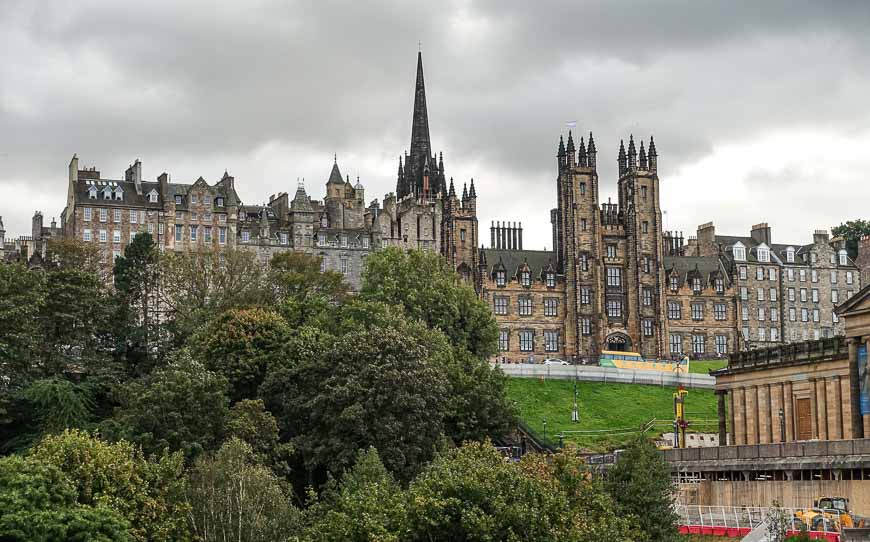
Edinburgh
We were wowed by Edinburgh Castle and humbled by the small city’s rich history, much of it learned during a three-hour walking tour with Stuart Usher.
We did a bit of shopping and visited a pub or two, all the while staying with Douglas Robertson, the cousin of a friend from Palgrave. It was great to view the city and the country from under Arthur’s Chair and through the eyes of someone born into a culture that is at once so much like ours, but so different too.

For more information about the Speyside Way hike, contact Nicola at nross@woodrising.com and/or visit Hillwalk Tours. (This post received financial support from Hillwalk Tours.)
More reading on long distance hikes in Europe
- Kungsleden, Sweden Trail Guide: Abisko to Nikkaluokta
- Highlights of a Hiking Trip in Mallorca, Spain
- What it’s Like to Hike the Full Tour du Mont Blanc
- What’s the Better Hike – the Kerry Way or the Dingle Way?
- 7-Day Lofoten Islands Itinerary With A Hiking Focus
Click on the photo to bookmark to your Pinterest boards.


